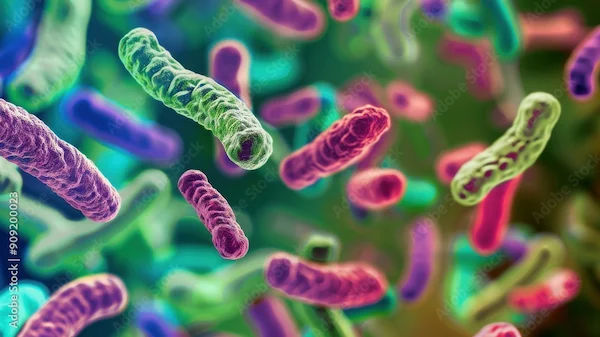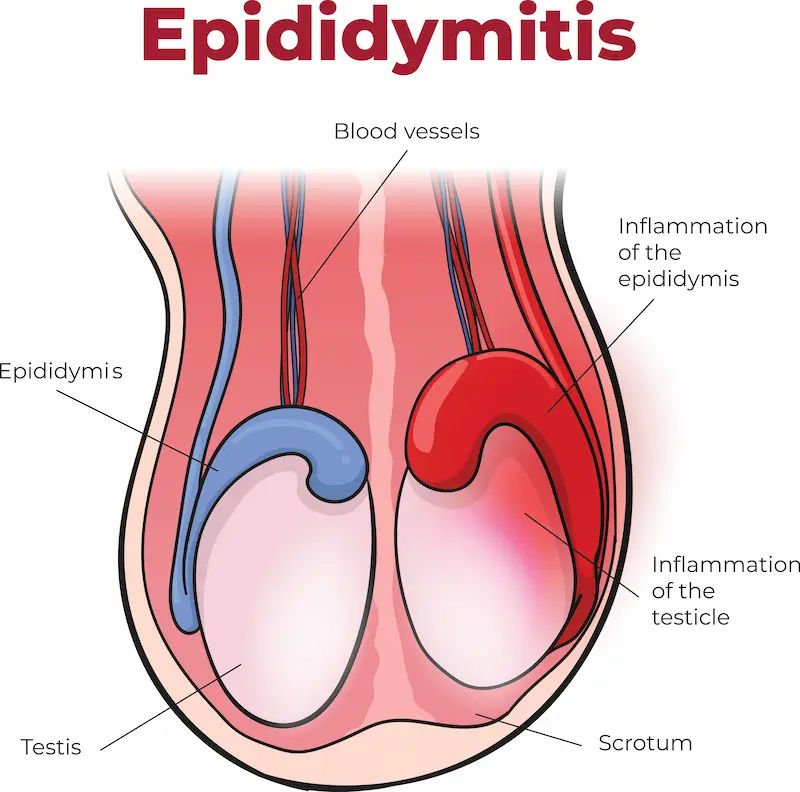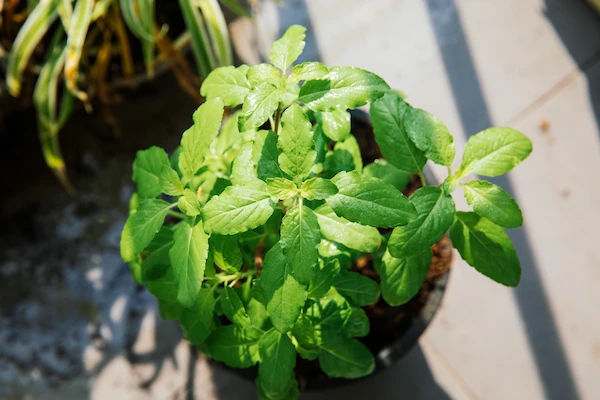Guide to Are You Antibiotic Resistance
Know about the antibiotic resistance, what it is, causes, its impact, overuse in livestock, what the solutions are and more.

Written by Dr. Md Yusuf Shareef
Reviewed by Dr. Shaik Abdul Kalam MD (Physician)
Last updated on 23rd Sep, 2025

Introduction
Antibiotics have been a cornerstone of modern medicine for nearly a century, saving countless lives from once-fatal bacterial infections. But this medical miracle is under threat. Antibiotic resistance is one of the most pressing global public health challenges of our time, often dubbed the "silent pandemic." It occurs when bacteria evolve mechanisms to withstand the drugs designed to kill them, rendering standard treatments ineffective and allowing infections to persist and spread.
This guide will demystify antibiotic resistance, explain how it happens through misuse and natural selection, and outline the serious risks it poses, from longer hospital stays to higher mortality rates. Most importantly, we’ll equip you with practical knowledge on how you can become part of the solution, protecting yourself and your community by using antibiotics responsibly. Understanding this issue is the first step in combating it.
What Exactly is Antibiotic Resistance?
Antibiotic resistance is a natural evolutionary process where bacteria develop the ability to defeat the drugs designed to kill them. This means the bacteria continue to multiply and cause infection, even in the presence of an antibiotic. The problem is accelerated by the misuse and overuse of these critical medicines.
Consult Top Doctors for Personalised Advice
A Simple Analogy: The Bacterial Arms Race
Imagine antibiotics as a specialised key that fits into a lock on a bacterium, breaking it open and killing it. In a large population of bacteria, a few might have a slightly different, tougher lock—a random genetic mutation. When you take an antibiotic, it kills all the bacteria with the standard lock. But the few with the unique, tougher lock survive. These survivors then multiply, passing on the gene for this resistant lock. Soon, the entire bacterial population is made up of microbes that can't be unlocked by that antibiotic. The drug becomes ineffective, and the infection becomes much harder to treat.
Not Your Body, But the Bacteria Themselves
A common misconception is that the human body becomes resistant to antibiotics. This is not the case. Antibiotic
resistance is a property of the bacteria, not the person. When we say an infection is "resistant," it means the bacteria causing that infection are no longer susceptible to the antibiotic's effects. This distinction is crucial because it means the solution lies in how we target the bacteria, not in changing our own biology.
How Does Antibiotic Resistance Develop?
The development of resistance is a fascinating and frightening example of evolution in action. It happens through two primary mechanisms: mutation and gene sharing.
Natural Selection and Mutation
As in the lock-and-key analogy, random changes (mutations) can occur in a bacterium's DNA. Most mutations are harmless or even detrimental to the bacterium. But occasionally, a mutation provides a survival advantage—like producing an enzyme that breaks down the antibiotic, altering the drug's target site so it can't bind, or pumping the antibiotic out of the cell. When an antibiotic is present, it acts as a selective pressure, wiping out the susceptible bacteria and leaving the resistant mutants to thrive and repopulate.
Horizontal Gene Transfer: Sharing Resistance Blueprints
Perhaps even more efficiently, bacteria can share genes without reproducing. Through processes called conjugation (bacterial "mating"), transformation (picking up free-floating DNA from dead bacteria), or transduction (via viruses), resistance genes can be transferred from one bacterium to another, even between different species. This means a harmless bacterium in your gut could share its resistance genes with a dangerous pathogen, effectively arming it against our medicines before it even causes an infection.
The Primary Drivers of Resistance
While resistance is natural, human actions have dramatically accelerated its pace to dangerous levels.
Misuse in Human Medicine
This is the driver most within our control. It includes:
- Prescribing for Viral Infections: Antibiotics have no effect on viruses like those that cause colds, flu, or COVID-19. Yet, patient pressure or diagnostic uncertainty often leads to unnecessary prescriptions.
- Not Completing the Course: Stopping antibiotics early because you "feel better" is a major error. This often leaves the toughest, most resistant bacteria alive, allowing them to multiply.
- Self-Medication: Using leftover antibiotics or sharing them with someone else is dangerous. The antibiotic may not be appropriate for the new infection, and the dosage will likely be incorrect.
Overuse in Livestock and Agriculture
A significant portion of antibiotics produced globally is used in animals, not for treating disease, but for promoting
growth and preventing illness in crowded, unsanitary conditions. This constant, low-dose exposure creates a perfect environment for resistant bacteria to develop in animals, which can then be transmitted to humans through food, direct contact, or the environment.
Lack of New Antibiotic Development
Developing new antibiotics is scientifically challenging and not as profitable for pharmaceutical companies as developing drugs for chronic conditions. The pipeline of new antibiotics is running dry, meaning we have fewer tools to fight these evolving superbugs, making the preservation of our existing drugs even more critical.
The Real-World Consequences: A Global Health Threat
The impact of antibiotic resistance is not a future hypothetical; it is a present-day reality affecting healthcare worldwide.
The Rise of Superbugs: MRSA and Beyond
You may have heard of MRSA (Methicillin-resistant Staphylococcus aureus), a notorious superbug that causes difficult-to-treat skin and bloodstream infections. But MRSA is just one example. We now face:
- VRE (Vancomycin-resistant Enterococci)
- CRE (Carbapenem-resistant Enterobacteriaceae), often called "nightmare bacteria"
- Multi-drug resistant tuberculosis (MDR-TB) and gonorrhea
These infections require longer, more complex, more toxic, and more expensive treatments, often with prolonged
hospital stays.
Longer Illness, Higher Mortality, and Increased Costs
When first-line antibiotics fail, doctors must use second- or third-line drugs. This delay in effective treatment can lead to severe complications, longer infectious periods, and a significantly higher risk of death. The economic burden is immense, costing healthcare systems billions in extended hospital care, more expensive drugs, and lost productivity. Common procedures like surgeries, chemotherapy, and organ transplants become far riskier because they depend on effective antibiotics to prevent subsequent infections.
Are You at Risk? Understanding Your Role
Everyone is at risk from antibiotic-resistant infections. They can affect anyone, of any age, in any country. Your
personal risk is influenced by factors like recent hospitalization, surgery, or having a weakened immune system.
However, the actions of every individual contribute to the overall problem.
Have You Ever Taken Antibiotics Incorrectly?
Reflect on your own behaviour. Have you ever asked a doctor for antibiotics for a cold? Have you ever saved leftover pills "just in case"? These common actions, often done with the best intentions, contribute directly to the problem. Every unnecessary or incorrectly used antibiotic application gives bacteria another opportunity to learn and adapt.
The Danger of Incomplete Courses
The belief that stopping antibiotics when symptoms fade is harmless is a dangerous myth. The course of treatment is designed to ensure all bacteria are eradicated. Stopping early often means the most resilient survivors remain. Finishing your prescription is non-negotiable in the fight against resistance.
How to Be Part of the Solution: Antibiotic Stewardship
The good news is that we can slow down the spread of resistance through a collective effort known as antibiotic
stewardship—the commitment to using antibiotics appropriately.
What Healthcare Professionals Are Doing
Doctors are being encouraged to follow prescribing guidelines more strictly, perform diagnostic tests to confirm
bacterial infections before prescribing, and educate their patients on the proper use and dangers of misuse.
What You Can Do: A Patient's Guide
You are the most important part of this equation. Here’s your action plan:
Do: Take antibiotics exactly as prescribed.
Finish the entire course, even if you feel better. Do not skip doses. This is the single most important thing you can do.
Don't: Pressure your doctor for antibiotics for colds or flu.
Trust your healthcare provider's diagnosis. Ask, "What can I do to feel better?" instead of demanding a prescription. If your symptoms persist or worsen, follow up. For persistent symptoms that concern you, you can consult a doctor online with Apollo24|7 for further evaluation.
Do: Practice good hygiene to prevent infections.
Regular handwashing, safe food handling, and keeping vaccinations up to date (like the flu shot) help prevent infections in the first place, reducing the need for antibiotics.
Don't: Use leftover antibiotics or share them.
Discard any leftover medication once the prescribed course is done. What worked for one infection may not work for another, and the dosage will be incorrect.
The Future of Fighting Infections
The scientific community is exploring innovative solutions beyond traditional antibiotics. Research into phage therapy (using viruses that infect bacteria), developing new drugs that disrupt bacterial communication (quorum sensing), and boosting the human immune system to fight infections more effectively are all promising avenues. However, these are long-term projects. For now, protecting our current arsenal of antibiotics through responsible use remains our best and most immediate defense.
Conclusion
Antibiotic resistance is a complex global crisis, but it is not insurmountable. It is a problem driven by human action and one that can be mitigated by human change. By understanding that these drugs are a precious, finite resource—not a cure-all—we can begin to shift our behaviour. The power to protect the efficacy of antibiotics for future generations lies with doctors, policymakers, farmers, and each one of us as patients. It requires a commitment to using these miracle drugs wisely, only when necessary, and exactly as directed. The next time you or a loved one is sick, remember that responsible antibiotic use is not just about your health; it's a critical act of protecting public health for everyone. If you have questions about an infection or a prescription, always seek professional medical advice.
Consult Top Doctors for Personalised Advice
Consult Top Doctors for Personalised Advice

Dr. Mainak Baksi
General Practitioner
13 Years • MBBS , MD (MPH)
Howrah
Mainak Baksi Clinic, Howrah
(50+ Patients)

Dr. Shesham Srinidhi
General Practitioner
5 Years • MD(physician)
Hyderabad
Apollo 24|7 Clinic, Hyderabad
(150+ Patients)

Dr. Siri Nallapu
General Practitioner
5 Years • MBBS
Hyderabad
Apollo 24|7 Clinic, Hyderabad

Dr. Rajib Ghose
General Physician/ Internal Medicine Specialist
25 Years • MBBS
East Midnapore
VIVEKANANDA SEBA SADAN, East Midnapore

Dr Suseela
General Physician
5 Years • MBBS
Bengaluru
Apollo Medical Center, Marathahalli, Bengaluru
More articles from General Medical Consultation
Frequently Asked Questions
1. What's the difference between an antibiotic and an antibacterial?
Antibiotics are a type of antimicrobial designed to work against bacteria inside the body. 'Antibacterial' is a broader term often used for cleaning products (soaps, wipes) that kill bacteria on surfaces. The overuse of antibacterial products can also contribute to resistance.
2. Can antibiotic resistance be reversed?
Once resistance develops in a bacterial population, it is generally permanent. However, if the selective pressure (i.e., the use of that specific antibiotic) is removed, susceptible bacteria may eventually outcompete the resistant ones over a very long period. The primary goal is to prevent resistance from developing and spreading in the first place.
3. How do I know if my infection is bacterial or viral?
It can be difficult to tell based on symptoms alone. Doctors often make a diagnosis based on your symptoms, a physical exam, and sometimes diagnostic tests (like a throat swab for strep or a blood test). Generally, viral infections like colds and flu come with symptoms like runny nose, cough, and general aches, while bacterial infections can be more localised (e.g., strep throat, urinary tract infection).
4. Are there natural alternatives to antibiotics?
While some foods and supplements (like garlic, honey, or probiotics) have mild antimicrobial or immune-boosting properties, they are not a substitute for prescribed antibiotics in treating a serious bacterial infection. Relying on them instead of proper medical treatment can be dangerous.
5. What should I do with leftover antibiotics?
Do not flush them or throw them in the trash, as this can contaminate the environment. The safest method is to take them to an official drug take-back program or pharmacy. If these are not available, mix them with an unappealing substance like used coffee grounds or cat litter in a sealed container before disposing of them in the trash.




